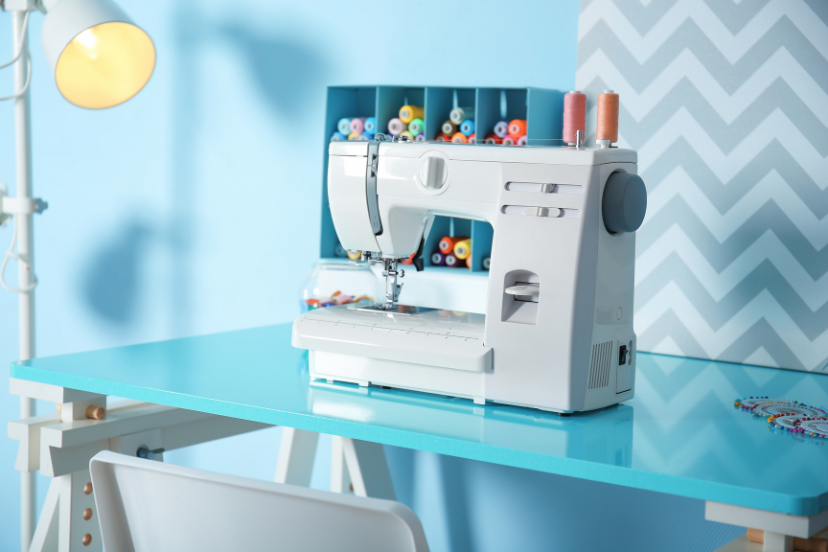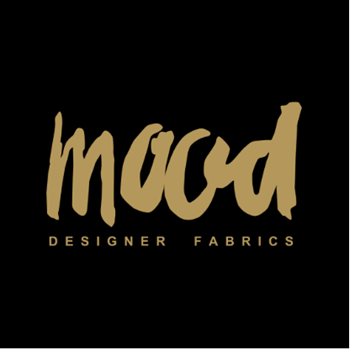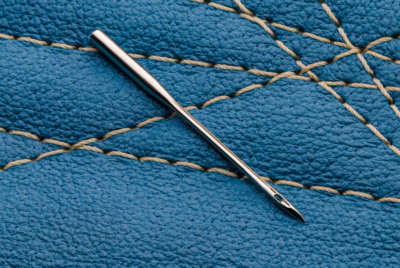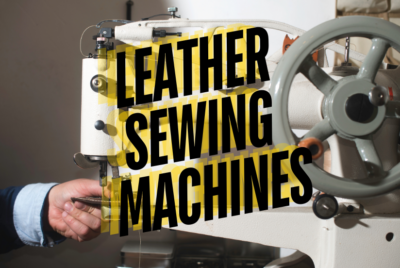What is a Serger Sewing Machine
A serger sewing machine is used for a variety of projects such as making clothing and quilting. These machines are also known as overlock machines.
While sergers may not replace your regular sewing machine, they complement it by offering specialized functions. These can take your sewing projects to a new level. One that has more professional looking finishes.
Unlike a regular sewing machine that typically uses one or two threads to create a seam, a serger utilizes multiple threads (usually between 2 to 8) to wrap around the edge of the fabric, trim excess fabric, and secure the seam in one swift pass.
A looper on a serger sewing machine is a critical component responsible for creating the stitches that secure the edges of fabric layers together while simultaneously trimming excess fabric. There are several key components that work together to create neat and finished seams.
Why Choose a Serger?
Choosing a serger sewing machine can be a fantastic addition to your sewing arsenal. It is an excellent choice for those who want to save time on finishing tasks. Many of the tasks a serger does can be done on a standard machine but will take more effort and time to complete.
If you are a hobbyist, experienced, or professional sewist, it’s more enjoyable to be creative with your designs and see your results quicker. Your time gained for reduced finishing work can be channeled toward improving your designs.
A serger can help you achieve results that look like they were done by a pro. This is particularly valuable for those who want to take their sewing skills to the next level. In addition to reducing finishing work, sergers can work with a variety of fabrics.
Common Uses for Sergers
Although you might be able to recreate these projects on a standard sewing machine, a serger will make it easier. It will improve your results.
Apparel Construction
When it comes to creating clothing, sergers are an absolute must-have. They’re essential for fashionistas and hobbyists alike. They neatly finish seams, keep your fabric from fraying and add a professional-looking touch to garments.
Whether you’re sewing a simple t-shirt or a complex evening gown, a serger can streamline the process and give your clothes that high-quality look and feel.
Home Décor
But it’s not just about clothes. Are you into DIY home décor?
All home décor projects require clean, durable edges that can hold up to rugged wear and withstand the test of time. For projects like making cozy throw pillows, chic curtains, or elegant table linens, a serger sewing machine is a must.
Quilting
Quilters appreciate the amazing results a serger can produce. They’re like the best quilting buddies you never knew you needed. Think about the satisfying feeling when you complete piecing together quilt blocks or attaching bindings.
Serger sewing machines offer precision and speed. It’s like quilting at warp speed, but with amazing results.
Stretch Fabrics
Whether you’re sewing yoga pants, swimsuits, or activewear, sergers are perfect for this task. Working with stretchy fabrics like jersey and spandex can be a bit tricky on a regular sewing machine. Sergers create flexible, stretchable seams that won’t pop under stress.
Craft Projects
If you’re a craft enthusiast, you’ll find sergers to be versatile tools for a wide range of projects. From crafting with felt to creating sturdy tote bags, sergers are versatile and reliable tools. Whether you’re making plush toys, baby blankets, or personalized accessories, a serger can be your go-to companion.
Fun and Creative Options
Sergers open creative possibilities with decorative thread capabilities and techniques. You can add a unique touch to your projects with decorative edges and rolled hems.
Serger Feature Considerations
If you are going to purchase a serger sewing machine online, it is always advisable to try to locate a store that will allow you to try the machine. Even if you decide to not buy from the store, you might need that store as a resource for parts or needles.
After you have decided to invest in a serger, you need to ensure that it will meet your needs. Here are some feature considerations that might sway your decision.
Easy Thread Management
Sergers are designed to use multiple threads efficiently. It is important that you spend your time working on your project, not wasting time threading.
Despite the multiple threads involved, threading a serger is not as daunting as it may seem. Most sergers come with color-coded threading guides, making the setup process straightforward and convenient.
Although there can be a learning curve for the novice, the simplification of the threading process eliminates the frustration typically associated with serging.
Efficient Thread Use
Sergers are designed to use multiple threads efficiently, which means you won’t go through spools of thread as quickly as with a regular sewing machine.
Speed
Sergers are designed for speed. They can stitch much faster and work more rapidly than a regular sewing machine. This can save you a significant amount of time. It makes them ideal for projects that require a lot of seaming or hemming.
Efficiency
Efficient and quick set up time can significantly reduce your sewing time.
Versatility
While sergers excel at finishing seams, they’re not limited to this task. Many modern sergers offer a variety of stitch options. Depending on the model, they can perform a variety of stitch types, such as overlock, rolled hem, flatlock, and more. This versatility allows you to tackle various sewing projects with ease and explore your creativity beyond just seam finishing.
Serger Quality Considerations
As important as the features you select for your serger, the quality of its output is important. Just like when you are looking at features, it is always advisable to try out the serger sewing machine you are considering to buy. Getting examples of the stitches it produces can also help in your decision process.
Perfect Seam Finishes
Sergers are renowned for their ability to produce impeccable seam finishes. Whether you’re working with delicate fabrics like chiffon or heavyweight materials like denim, a serger will create clean and fray-resistant edges that enhance the durability and aesthetics of your projects.
Clean-Looking Edges
Sergers are renowned for their ability to create clean and professional-looking edges on fabric. They trim the excess seam allowance while simultaneously sewing, preventing fraying, and ensuring a polished finish.
Neat Inside Finish
In addition to clean-looking edges, sergers are excellent for giving your garments a great look on the inside. This is particularly important for garments with exposed seams, like activewear or lingerie.
Consistent Stitches
Sergers produce uniform and consistent stitches. This consistency is especially important in garment construction that will undergo a lot of wear and tear, like sportswear or children’s clothing. The multiple threads used by sergers create strong and durable seams when used for quilting.
Strong Seams
The multiple threads used by sergers create strong and durable seams. This is especially important for projects like garments and pillows that will be exposed to constant use.
Elasticity and Stretch
Sergers are perfect for sewing stretchy fabrics, as they create secure and flexible seams. This makes them indispensable for projects involving knits and other stretch materials.
Serger Basic Terminology
The major components of a serger machine are like a standard sewing machine,
Looper
A looper on a serger sewing machine is a critical component responsible for creating the stitches. Each stitch secures the edges of fabric layers together while simultaneously trimming excess fabric.
Sergers have two loopers—an upper looper and a lower looper. These loopers are responsible for guiding and looping threads around the fabric edges, creating overlock stitches and securing the seam. The interaction between the loopers and the needles forms the stitches.
Needles
Sergers typically have two to five needles. These needles are responsible for stitching the fabric layers together. Some sergers have both standard and specialty needles for different types of stitches.
Thread Spools
Sergers have multiple thread spools, usually four to five, for various threads. Each thread has its specific role, such as the upper and lower looper threads, the left and right needle threads, and sometimes a chain stitch or coverstitch thread.
Tension Dials
Tension dials control the tension of the threads. Proper tension adjustment is crucial for achieving balanced and neatly finished stitches. Sergers typically have separate tension controls for each thread.
Stitch Length and Width Controls
These controls allow you to adjust the length and width of the stitches. For example, you can make shorter or longer stitches and change the width of the overlock for different fabric types and sewing techniques.
Differential Feed
The differential feed mechanism consists of feed dogs that control the movement of the fabric layers. It can be adjusted to handle different fabric types, preventing stretching or puckering during sewing.
Cutting Blade
Sergers have one or more cutting blades located near the presser foot. These blades trim the excess fabric as you sew, creating clean, finished edges. Some sergers have multiple cutting blades for more specialized applications.
Presser Foot
The presser foot holds the fabric in place as you sew. It can be raised or lowered as needed.
Feed Dogs
Sergers have feed dogs beneath the fabric to help move the fabric layers evenly while stitching.
Stitch Selection Dial
This dial allows you to choose from various stitch options, such as a basic overlock, rolled hem, flatlock, or coverstitch, depending on your sewing needs.
Thread Guides
Thread guides are often color-coded to help you thread the machine correctly. Proper threading is crucial for stitch quality.
Needle Plate
The needle plate is a smooth metal surface that supports the fabric as it passes under the presser foot. It often has seam allowance markings for accurate stitching.
Thread Tension Release Lever
This lever disengages the upper looper tension, allowing for easier threading or decorative thread placement without forming stitches.
Waste Collector or Tray
Sergers may have a waste collector or tray to collect trimmed fabric and thread scraps.
Handwheel
The handwheel is used to manually turn the machine for threading or adjusting settings.
These components work together to create a variety of stitches, including overlock, rolled hem, flatlock, and coverstitch, making sergers versatile machines for finishing seams, creating decorative edges, and enhancing the quality and appearance of sewing projects.
FAQ
What is the best serger sewing machine?
To help you in your search for a serger sewing machine we have an article that has reviewed the “10 Best Selling Serger Sewing Machines“. In the article we described the key features, disadvantages, and user review rating.
Summary
Serger sewing machines are incredibly versatile and can elevate the quality of your sewing projects in various ways. Sergers aren’t just another tool, they’re the superheroes of the sewing world.
From giving your garments a professional finish, to ensuring your home decor items are long-lasting, to creating quilting and craft designs that you can be proud of, sergers are indispensable tools. This is true for both beginners and experienced sewists.
A serger can elevate your projects from ‘homemade’ to ‘handcrafted masterpiece’. Happy sewing.
RetroSewMachines.com is a participant in the Amazon Services LLC Associates Program. As an Amazon Associate, we earn from qualifying purchases. We also participates in other affiliate programs and may earn a referral commission if you purchase through links on this website. The information presented here is for general educational purposes only.






Comments are closed.